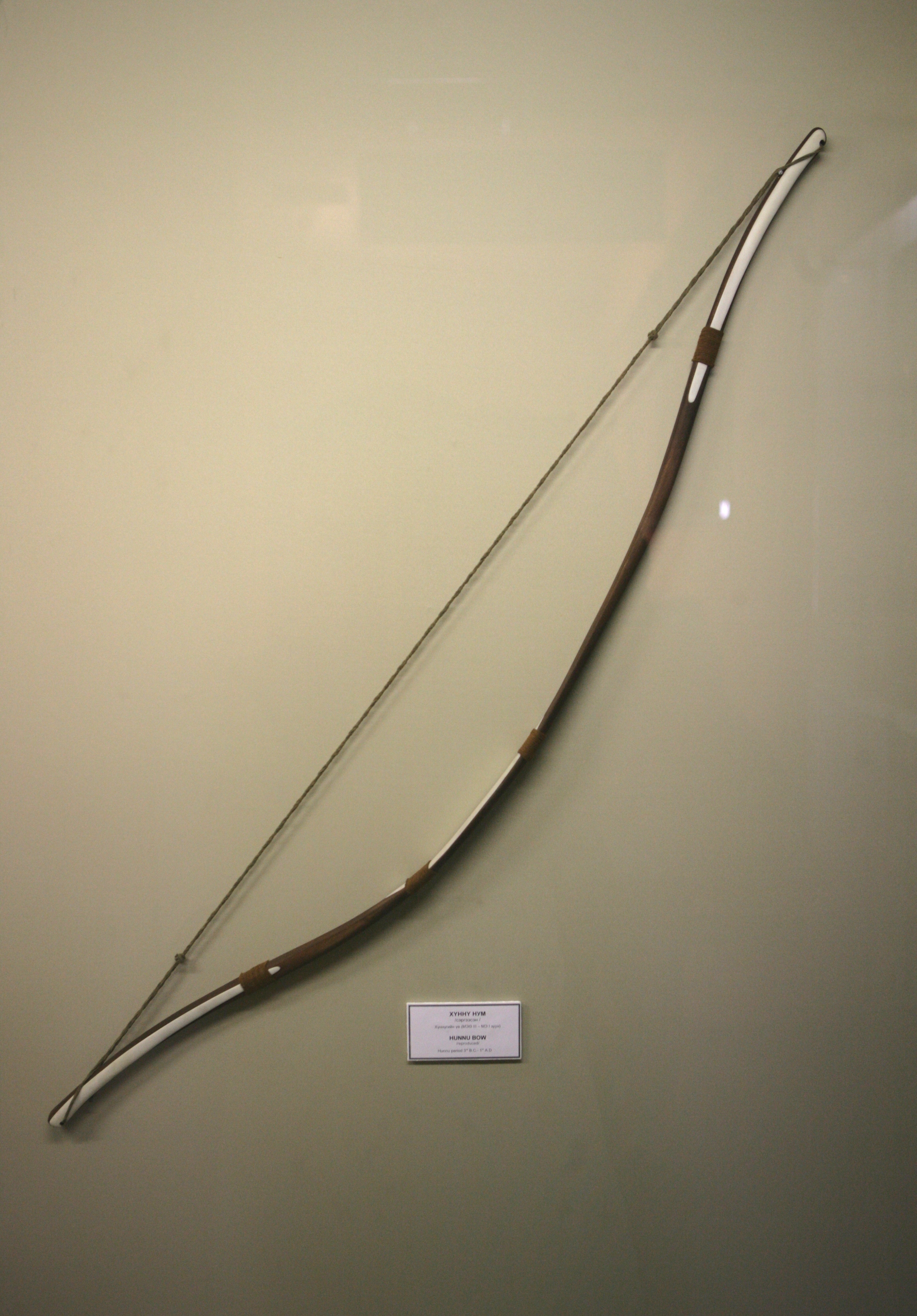Xiongnu/Hunnu bow (reproduced) 3rd C. BCE - 1st C. CE
"Among the Huns, no weapon was more important than the bow. The bow was paramount to the Hun warrior and a Hun could shoot at full gallop and even shoot in retreat. The bow used by the Huns was a reflexed composite bow. Seven bone plaques were used to stiffen the ears and handle of the bow. Hun bows were asymmetrical. One theory for the use of asymmetric shape was that it allowed the bow to be increased in size without restricting its use from the saddle of a horse. These bows could shoot arrows at much greater distances than any Roman or European bow. The advantages of distance and maneuverability gave the Huns a great advantage in battle.
When the enemy had been sufficiently weakened by the onslaught of arrows, the Huns would move in closer to engage them in hand to hand combat. One of the most popular weapon used was the “Scythian ax” or “Hunnic tomahawk”. These were used along with javelins and swords to kill the remaining enemies. Like the Scythians and Sarmatians before them, the Huns used lassos in combat. The lasso could be used to dismount or entangle an enemy, or to drag him until he strangled to death. Lassos could also be used to capture the enemy alive in order to be ransomed later or sold into slavery.
Armor among the Huns was diverse and often depended on how rich the owner was. Many poor Huns were just lightly equipped with a leather cuirass. Others wore armor made from bone, horn, or horse hooves. More well equipped Huns wore metal lamellae or Roman chain mail. Huns serving under the Romans were almost always well equipped. As the Huns in Europe started to develop an economy based on warfare, armor became more important.
Some Huns served in the Roman army. Although the Huns were excellent fighters, the Romans generally believed that their “lack of discipline made them more a terror to the provinces they were supposed to defend than to the enemy.” Sidonius wrote “Again and again they broke loose with raid and fire and sword and savagery and pillage destroyed all things nearby.” Maenchen-Helfen notes that “In Gaul, the Romans had to keep garrisons in the cities to protect them from their own auxiliaries” (The World of the Huns pg. 258).
There was one known Hunnic unit in the Roman army that served the Romans very well and that was the Unnigardae. They were known for their ferocity and high status as the best troops. Helfen writes “The Unnigardae were a small corps of horsemen, excellent in lightning attacks and dashing raids, at their best as scouts and vanguards...Synesius, bishop of Ptolemais, praised them as the savior of his beloved city. It was true that they sometimes got out of hand, ‘like young hounds,’ but their leader ‘would take them by the throat and call them in, even before they sated themselves with their charge and their wild-beast slaughter” (The World of the Huns pg. 255)."
-taken from wildfiregames and Otto Helfen's 'The World of the Huns'
 |
| Xiongnu/Hunnu bow (reproduced) 3rd C. BCE - 1st C. CE. National Museum of Mongolian History. |
 |
| Closeup of description plaque. |
Source:
https://en.wikipedia.org/wiki/File:Reproduction_Hunnu_bow_-_National_Museum_of_Mongolian_History.jpg
Quote:
Otto J. Maenchen-Helfen. The World of the Huns: Studies in Their History and Culture.


Comments
Post a Comment